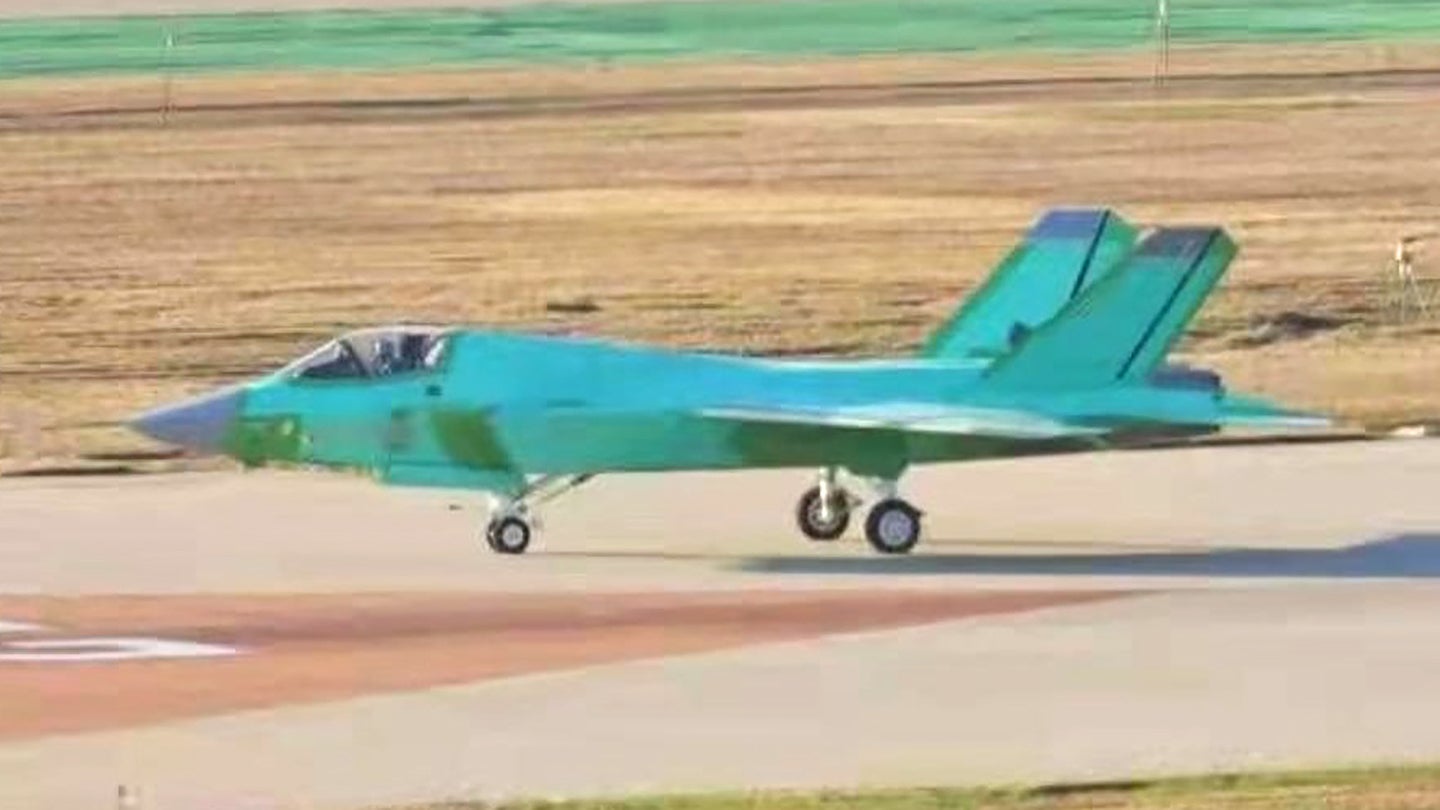China made global headlines for its military technology advances yet again on October 29, 2021, when it became clear that the long-awaited carrier-capable version of its FC-31 medium-weight stealth fighter had flown. The War Zone was among the first outlets to report this development, as well as give preliminary analysis, which you can read here. Suffice it to say, this revelation was a major one for the People’s Liberation Army Navy (PLAN).
This jet will eventually equip the PLAN’s third aircraft carrier—as well as those that follow—the country’s first indigenous design, which will include catapults and is far along in its construction. Yet the feature on this navalized fighter adaptation of Shenyang Aircraft Corporation’s FC-31—sometimes referred to as the J-35, J-31, and J-21—that is most intriguing is its canopy and cockpit configuration. Here’s why.
Prior to the emergence of this latest iteration of the FC-31, the prototype and the refined version that followed it—both land-based aircraft—featured a bubble-like canopy with decent rearward visibility. Now, this new carrier-capable variant features a totally revised canopy and cockpit arrangement that features no rearward visibility. Instead, the upper fuselage blends nearly flush with the rear of the upper canopy. In fact, it is extremely similar to the configuration found on the F-35, and nearly identical to the one on the F-35B.

While the FC-31 clearly is ‘influenced,’ at least to some degree, by the F-35, unlike that fighter design, it has no short-takeoff and vertical-landing (STOVL) requirement. The inclusion of the STOVL requirement for the F-35B resulted in significant design penalties that will be ‘paid for‘ by the other two non-STOVL variants throughout their service lives. The chief driver of these issues was the need to accommodate a huge lift-fan motor behind the cockpit of the F-35B that is powered by the main engine via a shaft and clutch system.
So, compared to the F-35 program, one of the biggest opportunities with a new medium-weight stealth fighter design like the FC-31 is not being hamstrung by the STOVL requirement. This should result in a more efficient, cheaper, and higher-performance design overall, at least relative to the manufacturing capabilities available to China. As such, it is quite intriguing that China chose to eschew the bubble canopy on its carrier-capable FC-31 derivative, eliminating rearward visibility. While the F-35’s Distributed Aperture System (DAS) helps with situational awareness in regards to threats around the aircraft, not being able to physically look over your shoulder remains a major complaint from F-35 pilots. Of course, like anything else, it is a tradeoff and is offset, at least to some degree, by the aircraft’s other high-tech advantages, as well as the benefits of having the STOVL-capable F-35B in the inventory at all.

What’s most interesting is that China has gone with a canopy-cockpit arrangement that is almost identical to the STOVL F-35B, which reduces rearward visibility even more than its F-35A and F-35C counterparts. In fact, when the navalized FC-31 images first appeared my immediate reaction was to ponder if this was somehow a STOVL and CATOBAR (Catapult Assisted Take-Off But Arrested Recovery) common airframe, which makes little sense. It looked like they adopted the F-35B’s arrangement for a lift-fan behind the cockpit. Upon further examination, it is clear this is not the case. Just look at the nose landing gear placement for proof. So, other factors are clearly at play.

While images of the navalized FC-31 are limited in terms of number and fidelity, this canopy change is likely for one primary reason, as well as the possible result of a couple of other contributing aspects.
The biggest factor would be fuel. Maximizing the fuel load of a tactical jet is already a critical design driver, but for a type that is meant to operate at sea, possibly without an alternative landing site available to it (bluewater operations), it becomes an absolute priority. This design change likely reflects this reality, with reward visibility being traded for more fuel stored in an opportune area for it in a twin-intake fighter like this—behind the cockpit in the central area of the fuselage.
The fact that stealthy aircraft lose their primary advantage when fitted with drop tanks makes finding more room for internal fuel even more important, as does the fact that this is a thirsty and relatively svelte twin-engine aircraft that has to also accommodate internal weapons bays, making the fight to find room for extra fuel even more critical.

Once again, this is all compounded by the carrier operating environment. With this in mind, enlarging the spine area behind the cockpit and eliminating the bubble canopy makes good sense. There are also potential aerodynamic advantages with such a design tweak.
The aircraft’s low-observable capabilities might be enhanced by this canopy arrangement. The canopy and the cockpit below it are some of the hardest elements to make low-observable in terms of the radar signature. In addition, a camera system loosely similar to DAS on the F-35 that could also provide missile approach warning along with general situational awareness as to what is going on around the jet could be part of the final navalized FC-31 design. Even a more basic rearward camera and warning system could help overcome this issue. This is in addition to deeper sensor fusion and data connectivity that would be provided in an advanced fighter with the newest avionics like the FC-31.

But once again, our analysis is that this was done, possibly with other less blatant tweaks to the design, to maximize the jet’s internal fuel volume for naval operations. It’s also possible that information as to the F-35B’s canopy and cockpit configuration was obtained by China that would support an almost identical configuration to the F-35B.
Hopefully, we will see better-resolution photos of this new FC-31 spin-off so we can have a clearer look for other refinements.
Contact the author: Tyler@thedrive.com
